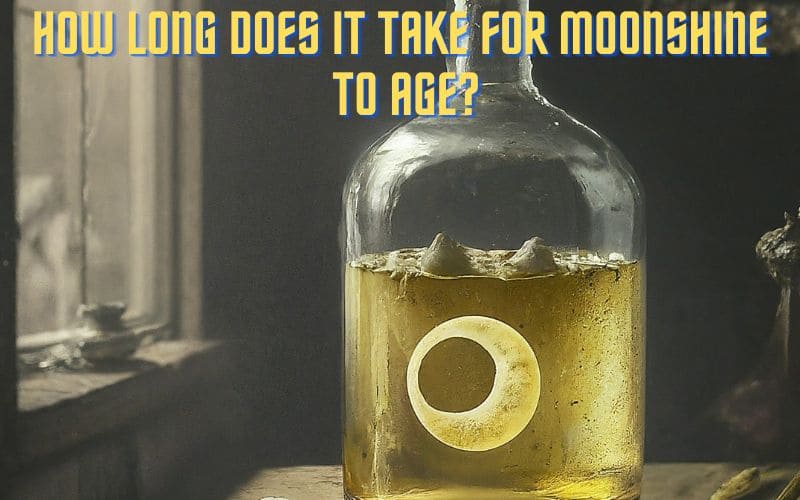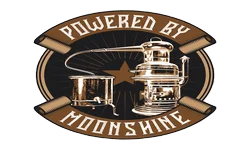How Long Does It Take For Moonshine To Age? Factors To Consider

Introduction
Welcome to our informative blog post about moonshine aging. In this comprehensive article, we will explore the intriguing world of moonshine aging, uncovering the factors that influence its maturation, and understanding the effects of aging on moonshine. Join us as we delve into the history, processes, and cultural significance of this timeless craft.
Answer to the Question
When it comes to the question of moonshine aging, there are several important factors to consider. Let’s delve into the key aspects that play a significant role in the aging process of moonshine:
- Barrel Type and Size
- Temperature and Climate
- Ingredients and Mash Quality
It’s crucial to understand that the choice of barrel type and size can greatly influence the aging process of moonshine. Similarly, the temperature and climate in which the moonshine is aged can have a substantial impact on its final characteristics. Additionally, the quality of ingredients and the precise control of the mash are vital aspects that directly affect the aging outcome.
Moreover, the effects of aging on moonshine are profound, leading to the development of unique flavors and noticeable color changes. Understanding the aging process is essential for moonshine enthusiasts and distillers alike. By understanding these factors, we can gain valuable insights into moonshine aging.
Factors Affecting Moonshine Aging
Barrel Type and Size
When it comes to moonshine aging, the barrel type and size are crucial factors that contribute to the flavor profile and overall quality of the spirit. Let’s delve deeper into the significance of barrel type and size:
- Oak Barrels: Oak is the most common wood used for aging moonshine. It imparts rich, vanilla, and caramel notes to the spirit, enhancing its complexity.
- Cherry Barrels: Cherry wood barrels offer a unique fruity flavor profile, adding hints of cherry and almonds to the moonshine.
- Maple Barrels: Utilizing maple barrels results in a smooth and slightly sweet moonshine with subtle maple undertones.
The size of the barrel has a profound impact on the aging process of moonshine. Here are the key points to consider:
- Small Barrels: Smaller barrels allow for greater interaction between the spirit and the wood, leading to accelerated aging and a more robust flavor profile.
- Large Barrels: While larger barrels slow down the aging process, they contribute to a smoother and more mellow moonshine, allowing for subtle flavors to develop over time.
By carefully selecting the type and size of the barrel, distillers can craft moonshine with unique flavor nuances that cater to a variety of palates.
Temperature and Climate
Temperature and climate play a crucial role in the aging process of moonshine. The environmental conditions in which the barrels are stored have a significant impact on the flavor, aroma, and overall quality of the final product.
Temperature variations influence the interaction between the moonshine and the wooden barrel. Here’s a closer look at the impact of temperature on moonshine aging:
- Warm Climates: In warmer regions, the aging process is accelerated due to the expansion and contraction of the spirit within the barrel. This movement enhances the interaction with the wood, resulting in a rich and complex flavor profile.
- Cooler Climates: In cooler environments, the aging of moonshine slows down, allowing for a more gradual maturation process. This gradual aging often leads to a smoother and more subtle character in the final product.
Aside from temperature, the overall climate also affects the aging of moonshine. Different climatic conditions contribute to distinct characteristics in the aged spirit:
- Humid Climates: High humidity levels can result in increased evaporation rates and may lead to a concentration of flavors in the moonshine.
- Dry Climates:Conversely, drier climates can intensify the extraction of flavors from the wood, enhancing the overall complexity and depth of the aged moonshine.
Understanding the interplay between temperature and climate is essential for crafting exceptional moonshine with a distinctive and desirable flavor profile.
Ingredients and Mash Quality
The selection of ingredients and the quality of the mash directly influence the aging of moonshine. The composition of the mash, including the grains used and the fermentation process, contributes to the flavors and characteristics that develop during aging. High-quality ingredients and a carefully crafted mash result in a more refined and complex aged moonshine.
Effects of Aging on Moonshine
Flavor Development
During the aging process, moonshine undergoes remarkable flavor development. As it interacts with the wood of the barrel, the spirit absorbs compounds that contribute to its flavor profile. This results in a transformation from a raw, fiery spirit to a mellow, complex liquor with rich and nuanced flavors.
Color Changes
When it comes to moonshine, the aging process is not just about flavor development, but it also significantly influences the color of the spirit. The interaction between the liquid and the wood plays a crucial role in the transformation of moonshine’s color over time. Let’s delve deeper into the fascinating journey of color changes in moonshine:
- Initial Clarity: Moonshine is initially clear, lacking any specific color. This clarity is a result of the distillation process, where impurities are removed, leaving the spirit pristine and colorless.
- Wood Interaction: Upon entering the aging process, moonshine takes on a captivating dance with the wood of the aging barrels. This interaction leads to the absorption of compounds from the wood, contributing to the development of color over time.
- Golden Transformation: As moonshine matures, it undergoes a gradual transformation, exhibiting a shift from clarity to a golden hue. The infusion of flavors from the wood imparts this rich and radiant color, signifying the depth of maturation achieved during aging.
- Amber Elegance: In its advanced aging stages, moonshine embraces an elegant amber tone, symbolizing the culmination of complexity and refinement. This stage represents the pinnacle of the aging process, where the spirit’s character is fully realized, reflected in the mesmerizing amber color it adorns.
Conclusion
In conclusion, the aging of moonshine is a captivating journey that is influenced by a myriad of factors, including barrel type, temperature, ingredients, and the aging environment. As moonshine matures, it evolves in flavor and color, ultimately resulting in a refined and complex spirit. We hope this article has provided valuable insights into the process and effects of moonshine aging, shedding light on the intricacies of this timeless craft.
